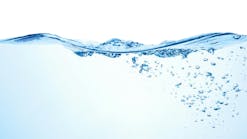Thermal mass flowmeter calibration, re-calibration, and in-situ calibration verification
What is the difference between calibration, re-calibration and in-situ calibration verification? This articles defines these and shares the benefits of verifying that a thermal mass flow meter remains in calibration while still in the field.
What is calibration?
Once a manufacturer produces a meter, it must be calibrated before sending it to the end user.
From a simplistic perspective, calibration is checking a meter for correctness against a standard. For a thermal mass flow meter, the unit is reviewed or compared to a measurement taken at a specific rate(s) and data point(s) and then compared to a known standard. The second step after calibration is resetting the scale, and most people associate this correction with calibration.
Sage Metering, for instance, calibrates its thermal mass flow meters in its NIST Traceable calibration facility.
What is re-calibration?
After a meter has been in the field for some time — typically one year — most manufacturers recommend that the meter be returned to the factory (or a third party) for re-calibration. In this case, the meter is calibrated again and faces adjustments to guarantee accuracy.
Without using a calibrated instrument, there is no confidence in the collected data. Why spend your company’s funds on a meter to measure gas flow if you are unwilling to ensure correct information? While this is a rhetorical question, I assure you that I have heard many people claim to waive a calibration because of the expense and inconvenience associated with it.
It is inconvenient and costly to recalibrate a meter.
Why is calibration such a problem for thermal mass flow measurement? Imagine buying a meter to measure gas at a remote location. Hiring a contractor or employee to install the unit can be expensive. A year later, the company would need to hire another employee or contractor to return to the location, remove the meter and ship it back to the manufacturer (or some third-party lab). Then, of course, there is the expense of hiring someone to reinstall the now-calibrated unit a few months later. Calibration, in this manner, is labor-intensive and costly.
What is in-situ calibration verification?
The Latin term in-situ means “in position.” In-situ calibration verification implies that a unit can be evaluated in position or onsite to determine if the meter remains in calibration from its original NIST calibration.
What are the benefits of onsite calibration verification?
The obvious benefit is that the user does not have to deal with the inconvenience and expense of removing the meter from service and sending it to the manufacturer for annual calibration. If the user can verify that the meter retains its NIST calibration while in the field and does not have errors that require adjustments, then there is no need to return the meter for re-calibration.
In addition to saving time and money, a meter that can perform frequent calibration checks now meets the EPA GHG Reporting Rule and calibration requirements to measure GHG emissions. In other words, the ability to calibrate the thermal mass flow meter in the field opened new markets for thermal mass flow meters with the ability to verify that the meter remains in calibration.
More recently, new compliance regulations for monitoring emissions on engines and turbines require calibration verification.
The first to introduce an in-situ calibration verification?
Sage Metering has led the way in introducing an in-situ calibration method for thermal mass flow meters. The Sage In-Situ Verification can occur without removing the meter from the pipe and stopping the gas service. Sage was the first thermal mass flow meter manufacturer to introduce such a system.
Fred Whorff is the Vice President of Sales & Business Development for Sage Metering. He has over 30 years of experience in product design and applications of flow measurement and control products. He holds patents on several flow technologies. As a hands-on engineer, he also has considerable field experience in various industries.
Fred Whorff | Vice President of Sales & Business Development for Sage Metering
Fred Whorff is the Vice President of Sales & Business Development for Sage Metering. He has over 30 years of experience in product design and applications of flow measurement and control products. He holds patents on several flow technologies. As a hands-on engineer, he also has considerable field experience in a variety of industries.


